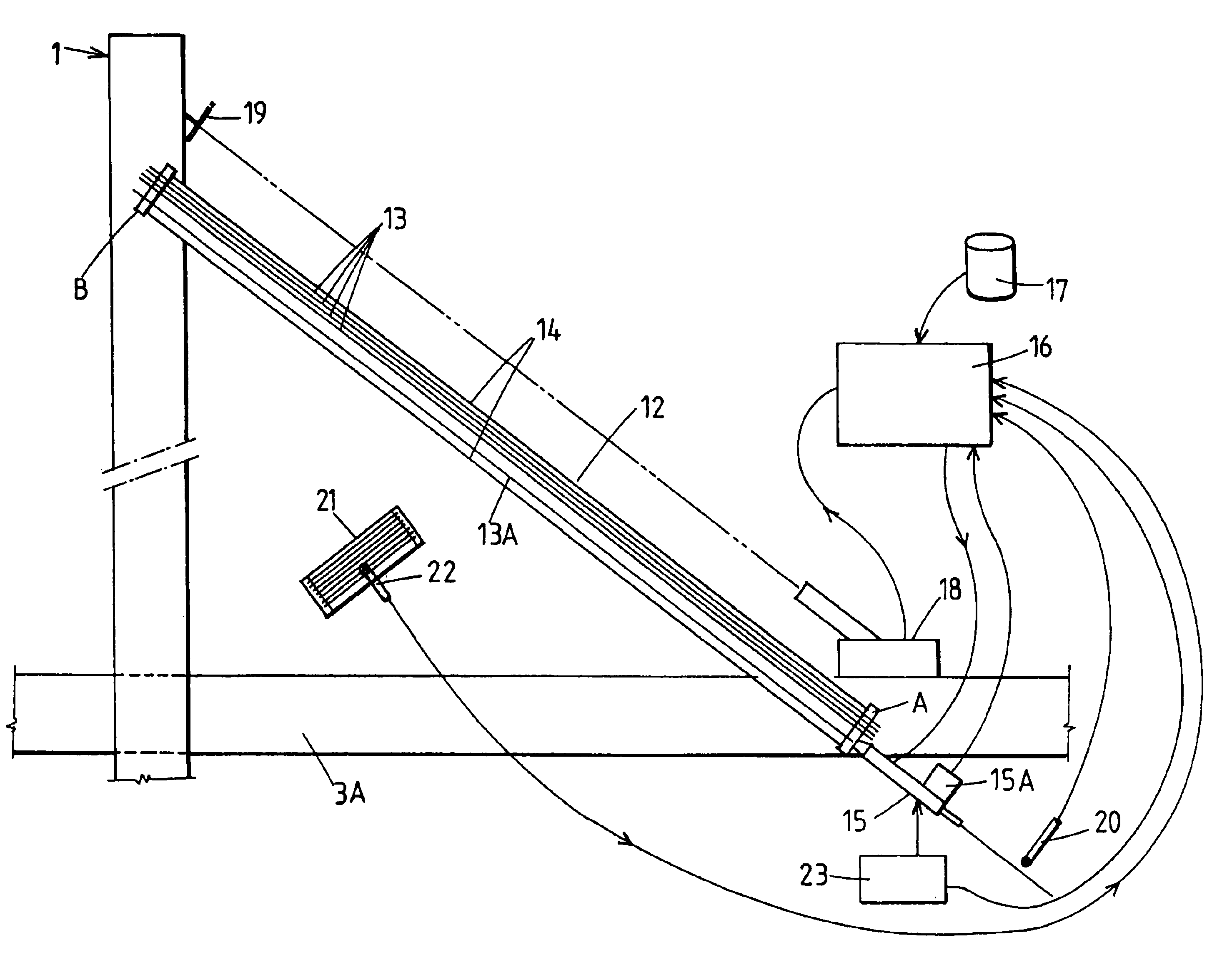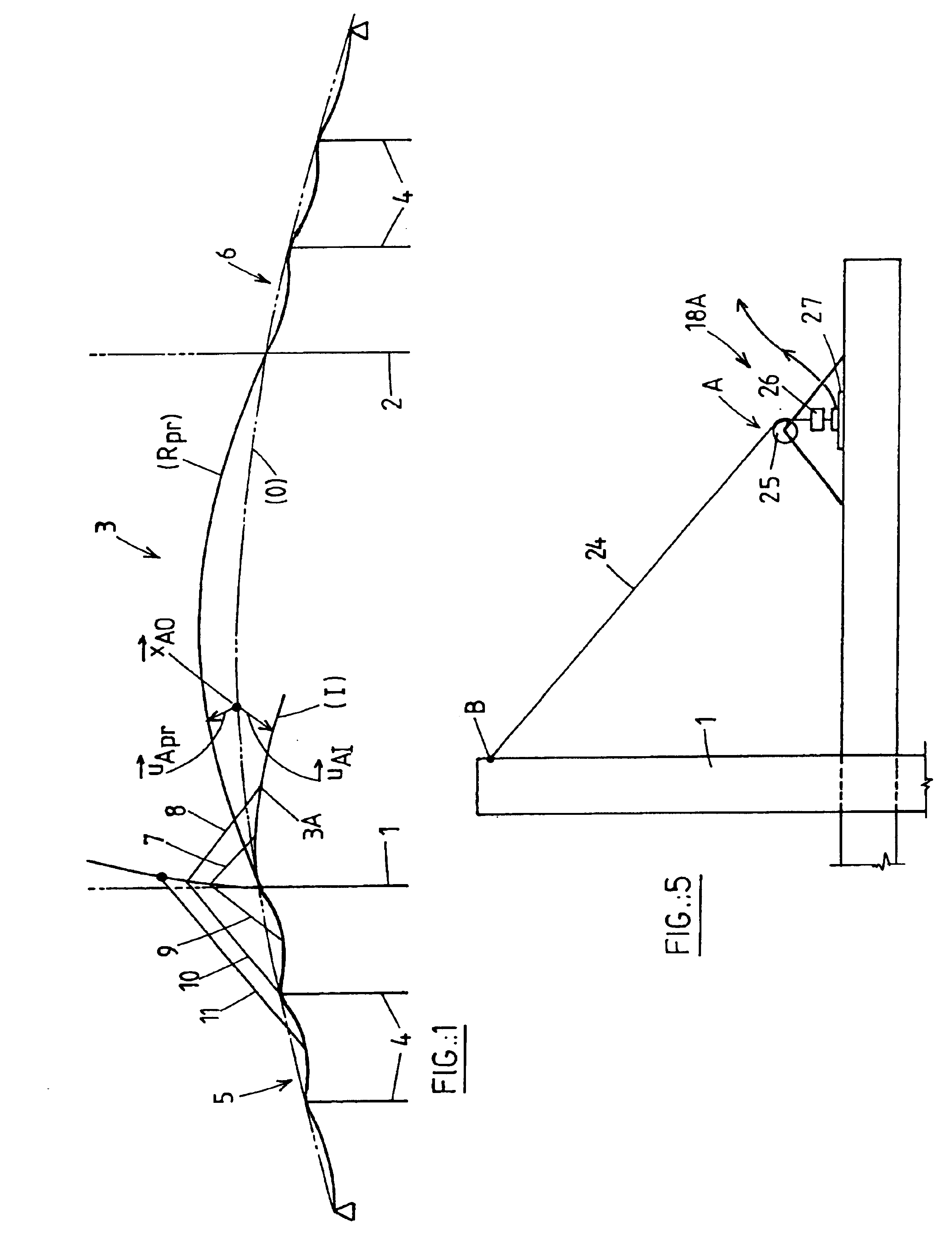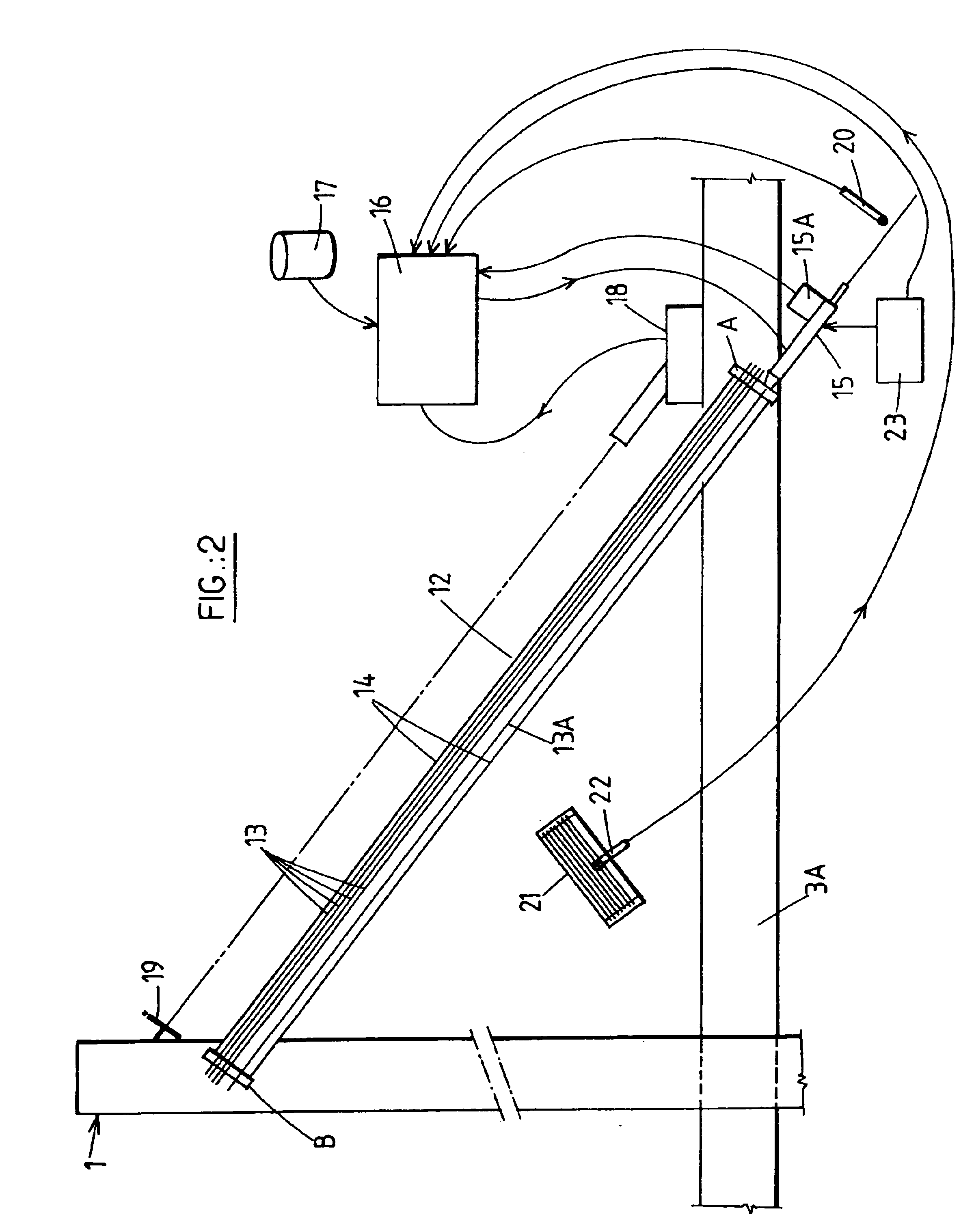Method for tensioning multiple-strand cables
a technology of tensioning and cable, applied in the direction of electrical digital data processing, structural/machine measurement, instruments, etc., can solve the problems of complex work, inconvenient adjustment of cable according to the specifications imposed by the design of the structure, and inability to meet the requirements of the structur
- Summary
- Abstract
- Description
- Claims
- Application Information
AI Technical Summary
Benefits of technology
Problems solved by technology
Method used
Image
Examples
first embodiment
[0093]Referring from now on to FIG. 3, the computation algorithm used by the microcomputer 16 to execute a method according to the invention using data supplied to it by the tension sensor 15A, the permanent memory 17, the rangefinder 18 and the temperature sensor 20 is described. It is assumed that, using an appropriate topographical procedure, it has been possible to measure on site the effective values of the displacements {right arrow over (μ)}Ar and {right arrow over (μ)}Bt of the cable anchors, just before installing the first strand. If this is not the case, it is always possible to use theoretical values of these displacements taken into account in the design process for this phase, provided that the predicted loading is rigorously respected on site and these values are corrected by means of a computer, the corrections being necessary because the temperatures of the structure and the cables already installed generally differ from the theoretical values taken into account dur...
second embodiment
[0125]The second embodiment differs in the step S3, during which, instead of computing the stretch value Δl, a value T is computed representing the locking tension to be achieved in the strand 13A before anchoring can take place.
[0126]The locking tension Tbloc is determined from the values {right arrow over (AB)}, q* and Lθ using the following equation:
Tbloc=T(Ea,q*,{right arrow over (AB)},Lθ)
[0127]Note that the determination of the function T above can use the same elastic chain theory as described in the work previously cited, the problem to be solved being based on looking for the value T rather than the value of L.
[0128]The value of the locking tension Tbloc computed by the computer 16 is displayed in a window V2 of the screen and the real value of the tension in the strand 13A measured by means of the sensor 15A is displayed simultaneously in another window V1. Locking is effected as soon as the values in the windows V1 and V2 are equal. The process can be stopped automaticall...
PUM
 Login to View More
Login to View More Abstract
Description
Claims
Application Information
 Login to View More
Login to View More - R&D
- Intellectual Property
- Life Sciences
- Materials
- Tech Scout
- Unparalleled Data Quality
- Higher Quality Content
- 60% Fewer Hallucinations
Browse by: Latest US Patents, China's latest patents, Technical Efficacy Thesaurus, Application Domain, Technology Topic, Popular Technical Reports.
© 2025 PatSnap. All rights reserved.Legal|Privacy policy|Modern Slavery Act Transparency Statement|Sitemap|About US| Contact US: help@patsnap.com



